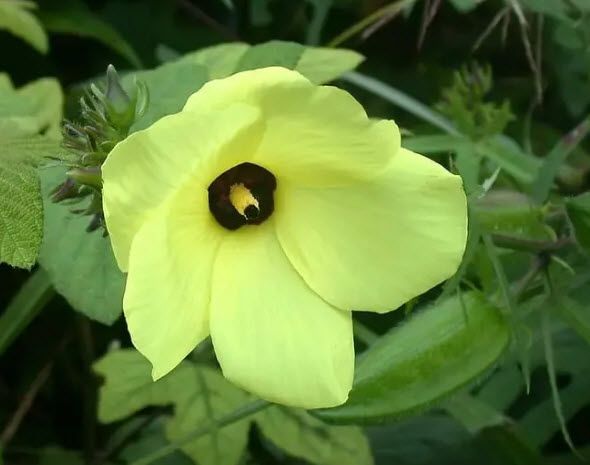- in Health and Wellness by Tony
Herbs for Health and Wellness
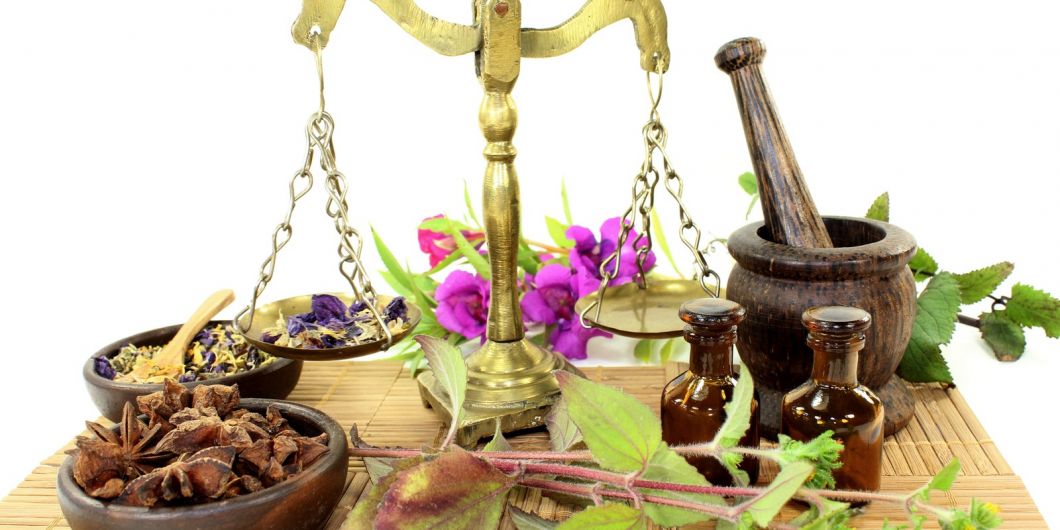
Certain herbs have specific curative effects, and there are many. However, it is not necessary, nor is there usually the time, to become an expert on the subject before you start. Do it gradually build up your botanical knowledge slowly and surely.
Begin by limiting your selection to familiar herbs to the garden and field varieties that flourish locally.
More...
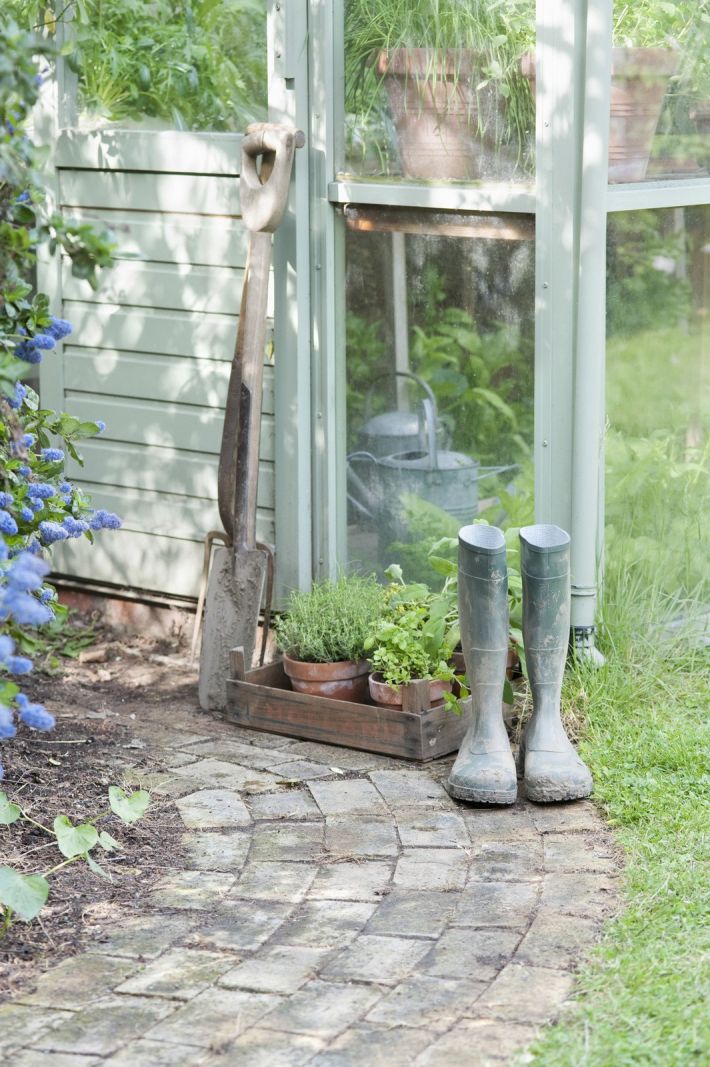
Learn about the different properties of herbs and double-check to make sure they are right for you. (Some herbs can interfere with pharmaceutical drugs; for instance, St. John's wort can interact with oral contraceptives.)
However, if you're foraging for medicinal herbs, be aware of contaminants that might have impacted plants you're planning to harvest. Roadside plants have been exposed to vehicle exhaust, run-off, and possibly poisonous weed killers.
And of course, be sure that you have correctly identified the plant you're harvesting from. If you're not 100 per cent certain, do not use it.
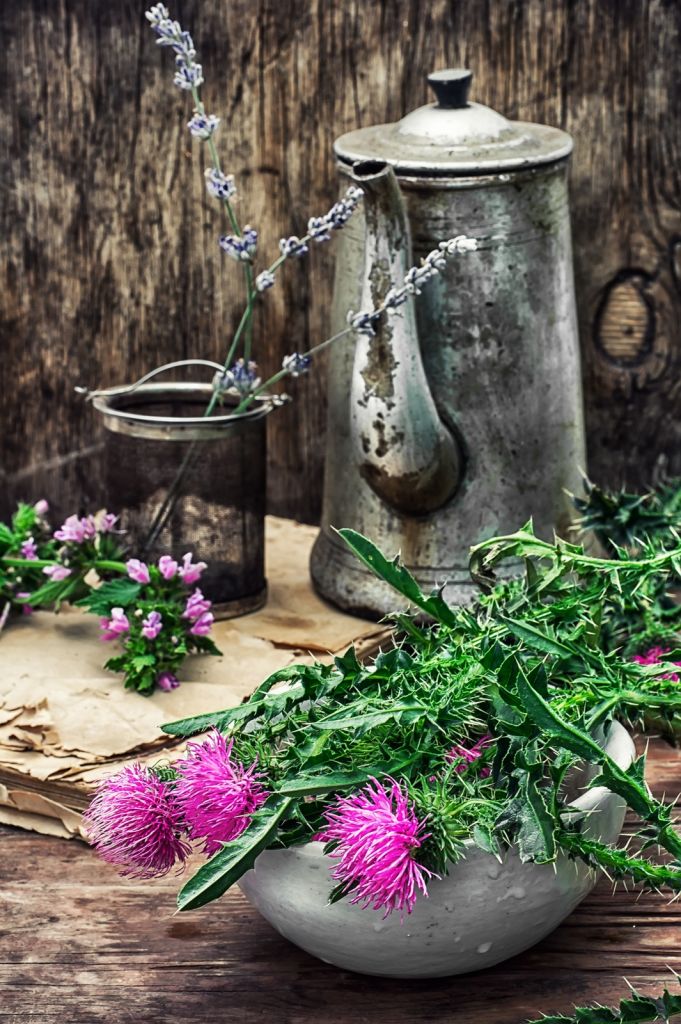
Garden herbs are aromatic and can be used in cooking as well as for medicine. Field and floral herbs are almost always purely for medicinal purposes.
Leaves are generally picked before the flowers appear, except the aromatic garden herbs, as their active essences do not diminish during flowering. Flowers are better gathered immediately they appear and certainly before pollination.
When drying herbs, be sure they are placed in a dry and airy location: the top of a cupboard, a shelf, a table in the attic. Clean them carefully first; usually leaves and, flowers are dirt-free, but roots need washing and patting dry.
Put the herbs on paper, separate the varieties and turn them from time to time.
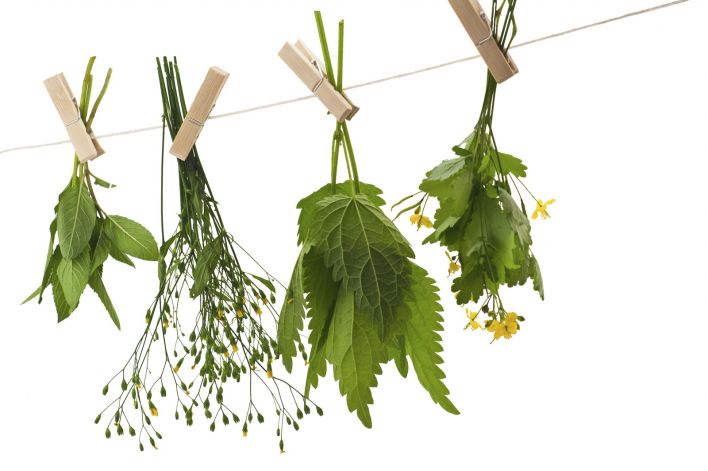
If not used in cooking or applied externally in natural form, herbs give off their active elements in water or alcohol. For healing purposes, water is generally used, alcohol compounds being for external use only. There are two techniques, known as infusion and decoction.
Infusion — made as tea. Basic recipe: 1 oz. (30 g) of the essential ingredient to a pint (6 dl) of boiling water. Leaves and flowers should not be boiled, so pour the boiling water over them.
The herb should be steeped for a minimum of half an hour and a maximum of 3 hours. For a simple tea, leave the pot or cup covered with a cosy for 10 to 15 minutes depending on the strength you prefer.
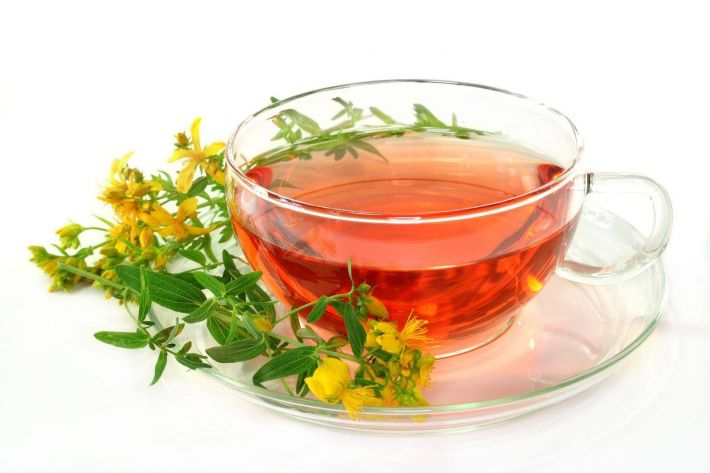
Use only china, glass, or ceramic pots, stainless steel or chipped free enamel pans — never aluminium or copper. The container must be kept covered during steeping; afterwards, strain the liquid into a jar or bottle.
A herb can also be infused with milk: cold milk absorbs the essences of most herbs without heat. The general recipe is one tablespoon of seasoning to every cup of milk; steep for several hours.
Decoction — simply boiling and usually necessary with seeds, wood, bark or root of a herb. Put 1 oz. (30 g) into a saucepan with a quart of cold water. Bring to the boil slowly, then simmer until the water has been reduced by about half — this usually takes about half an hour.
Keep the lid on during boiling, and use only stainless steel, earthenware or glass containers. Remove from heat, stir well and allow cooling before straining.
Garden Herbs

Basil: Soothing helps calm the nerves. One of the oldest herbs known to mankind, basil's healing and healthful properties have been the most treasured knowledge across the world.
The many varied species of basil include: sweet basil, lemon basil, Italian or curly basil, holy basil, Thai basil and lettuce-leaf basil.
The smell and flavour of basil vary upon the concentration of essential volatile oils present in the herb.
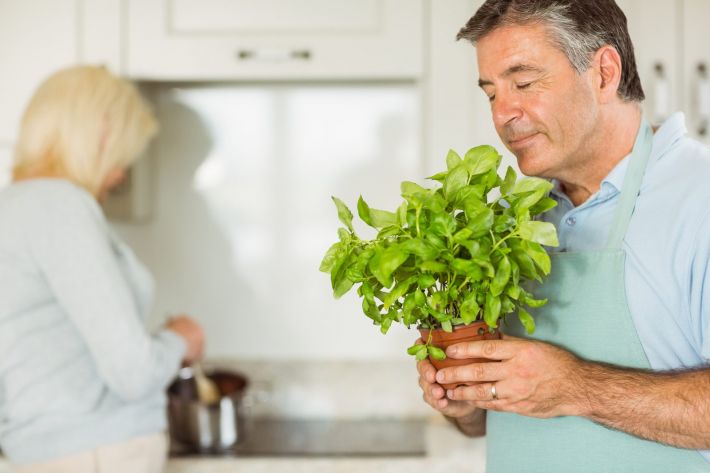
From a healthy gut to stronger immunity, the benefits of basil leaves are quite a lot.
It will help relieve menstrual pains and fend off intestinal infections. The leaves can be effective when applied to snake bites and insect stings.
An infusion of basil taken hot at night encourages perspiration and stops a cold in its early stages. Could also soothe a fever, headache, sore throat, cold, cough, flu.
The excellent skin cleanser is perfect for those with oily skin. It also helps remove dirt and impurities that clog pores.
Basil's essential oil may help manage depression and anxiety too. The herb is believed to stimulate neurotransmitters that regulate the hormones responsible for inducing happiness and energy. Basil is considered a powerful adaptogen or an anti-stress agent. Its anti-inflammatory and immune-boosting properties help manage stress too.
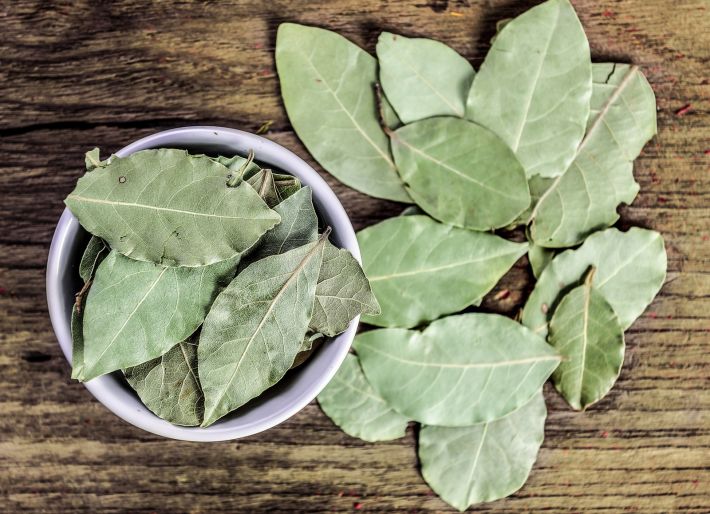
Bay Leaf: Many culinary enthusiasts swear by bay leaves as a key ingredient in stews and other savoury dishes. But the potential uses of these leaves extend beyond the kitchen.
For example, its antiseptic qualities, hence its wide use in marination and pickling of food, also stimulates digestion. The presence of vitamin A and C along with folic acid and various minerals in bay leaf makes it a nutrient-dense herb.
Organic compounds found in bay leaves are effective for settling an upset stomach and soothe irritable bowel syndrome (IBS). Some complex proteins cannot be easily digested by the body, which is when bay leaves play a major role. The unique enzymes present in these leaves help facilitate efficient digestion.
Finally, there’s bay leaf burning, which is said to produce smoke that offers a range of health benefits.
Anxiety relief is a major benefit of bay leaf burning
This is probably due to the fact that bay leaf smoke contains linalool, a compound found in a number of other plants, including mint and lavender. Lavender is another plant commonly used for treating anxiety.
According to the theory behind aromatherapy, inhaling certain fragrances prompts olfactory (smell) receptors in your nose to communicate with the areas of your brain that help regulate your emotions.
Marjoram
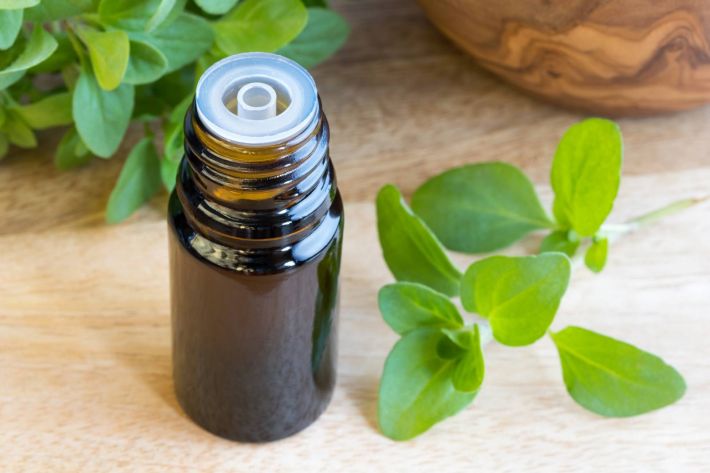
Marjoram, also known as sweet marjoram, is an aromatic herb in the mint family that has been grown in the Mediterranean, North Africa, and Western Asia for thousands of years.
While similar to oregano, it has a milder flavour and is often used to garnish salads, soups, and meat dishes.
It’s particularly potent when dried but can also be used fresh.
An excellent tranquillizer. Suitable as a tonic and particularly recommended for loss of appetite. It has also been suggested that it helps cure a headache and hepatitis.
People with rheumatism should apply marjoram compresses to painful areas. For a cold, boil marjoram in water and inhale the vapours.
Fresh or dried leaves can be made into a tea or extract. Both forms can be found in health food stores or online. For toothache, drop oil of marjoram on the tooth.
Pregnant or breastfeeding women should avoid marjoram supplements.
Due to its influence on various reproductive hormones and menstruation, this herb may trigger negative side effects during pregnancy.
Mint
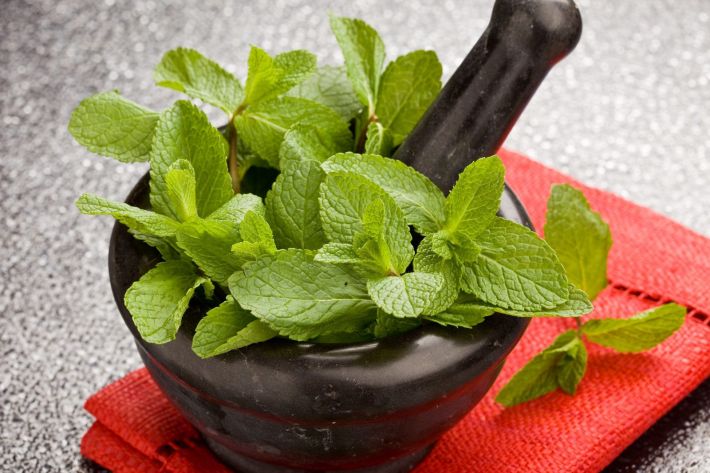
Mint is a perennial herb grown for its leaves. They are wonderfully infused in hot water to make a refreshing tea, chopped and added to many dishes, or used to make the mint sauce (a classic addition to roast lamb).
Mint: A very strong antiseptic — even the smell of mint keeps away flies and mosquitoes. Beneficial for the entire digestive system, liver, gall bladder and intestines.
Mint can stimulate the heart and the nervous system — it can revive the mind and counteract the debilitation of hot weather. Its antiseptic properties make it good respiratory medicine.
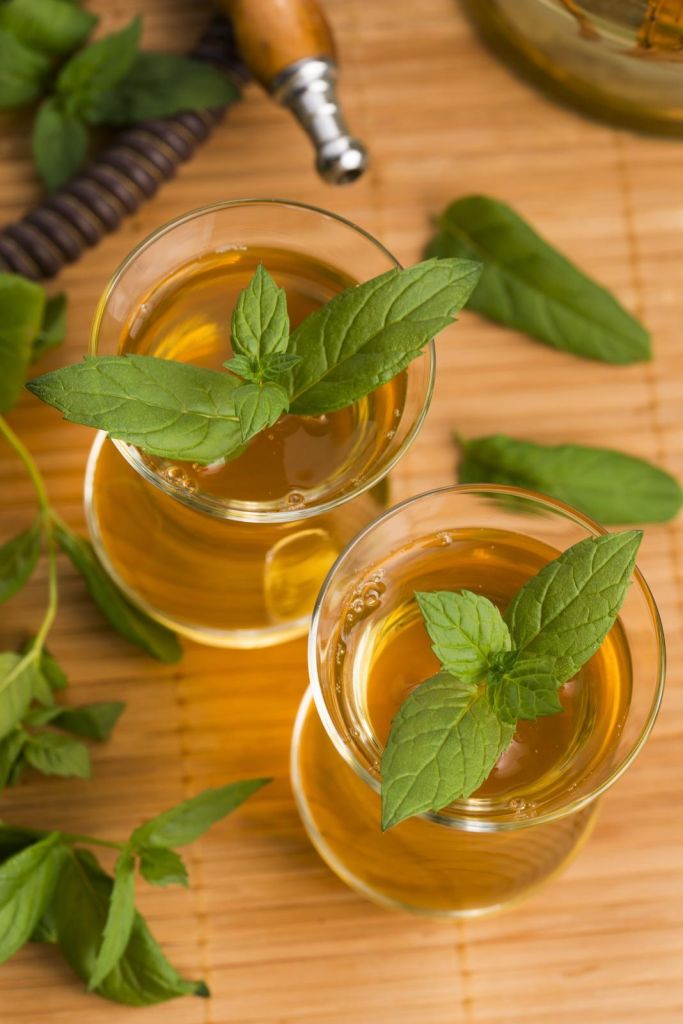
If you’re someone who always struggles with a nasty cold, try mint. At the start of a cold, inhale the vapours from a boiling infusion.
For people with asthma and other diseases where shortness of breath is involved, put a few drops of essence of mint in a cup of warm water, mix thoroughly, then bottle and tightly cork. When your breath becomes strained, a few drops from the bottle, sprinkled on a handkerchief and held to the mouth and nose will give relief.
Have you wondered why many tubes of toothpaste come with a mint base? That’s because of its antibacterial properties. It inhibits the growth of bacteria and cleanses plague deposition in your teeth.
Mint is a marvellous remedy for headaches — just placing freshly gathered leaves on the forehead can help. Mint tea can help to cure a headache, and if accompanied by stomach aches, as during menstruation.
Add half a teaspoon of ground ginger and a pinch of bicarbonate soda before pouring on the water; also, for the head — a warm compress of mint infusion placed on the brow. A drop of essence of mint on the sensitive spot can also soothe a toothache.
It beats morning sickness and nausea
Since it’s a great remedy for treating stomach issues, it can also be a great remedy to treat nausea associated with morning sickness. It activates the enzymes necessary for digestion and beats nausea. Not only that, it but it can be a great remedy for expecting mothers who often experience morning sickness.
Manage stress
The aroma of mint is very calming in nature which can be used in aromatherapy to beat stress. The aroma of mint helps in relaxing your brain and body by calming your mind. Mint also has adaptogenic properties which regulate the stress hormone, cortisol levels and builds a natural resilience to stress.
Parsley
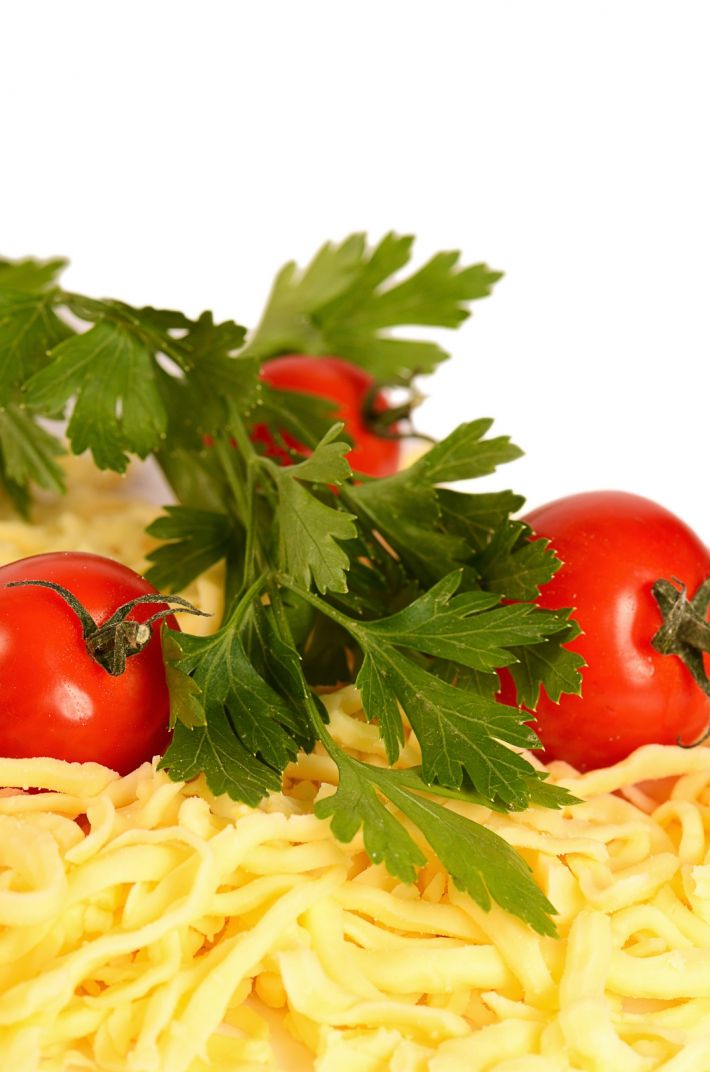
We tend to think of parsley as a garnish, and don't give it much thought. But this herb does much more than making your plate look pretty.
Parsley is one of the easiest herbs to grow and should be used liberally. Besides being rich in vitamin C, it has stimulating properties and is valuable in all liver ailments, particularly jaundice. It makes a pleasant tea and is well steeped in warm milk.
An infusion helps eye ailments.
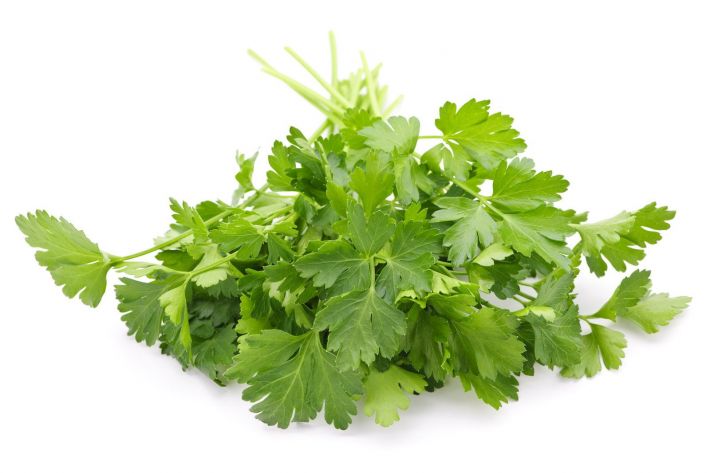
Parsley jelly recipe
It is known to relieve gout and rheumatism, and this recipe for parsley jelly will help those aches and purify the blood: wash a large bunch of parsley, press it down firmly in a stainless steel or earthenware pot, cover with water.
Bring to the boil, then simmer with a lid on for two hours. Strain. To each pint (6 dl) of the liquid, add 1lb (0.45 kilogram) of sugar and the rind of a lemon. Please bring to the boil and simmer until it sets.
Settle your stomach with the help of this soothing herb that aids digestion and helps reduce bloating. It contains compounds that enable the expulsion of gas from the body.” Add some flat-leaf parsley into your dinner before a big night out.
Eating parsley can help you freshen your breath and mask any bad odours. Parsley acts as a natural breath freshener, especially after consuming garlic or onion.
Rosemary (Rosmarinus officinalis)
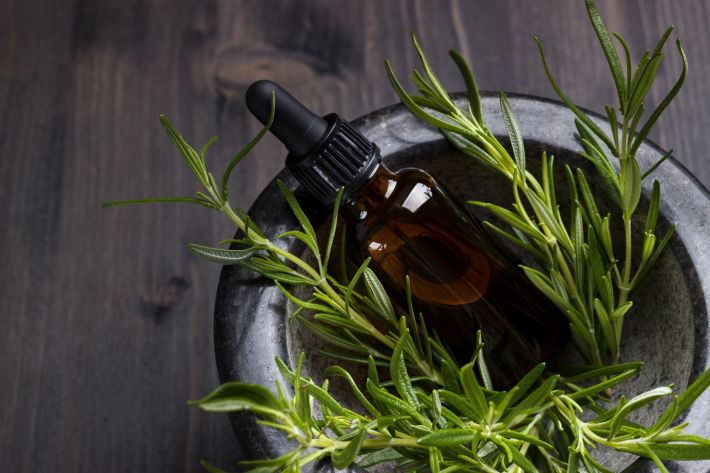
Rosemary: The popular evergreen shrub and herb rosemary recently underwent a name change as genetic science more accurately identifies its relationships as Salvia rosmarinus. Whatever, we wish to call it, as the usage of “rosemary” was the common name will remain for some time with gardening dinosaurs like me.
Rosemary can alleviate nervous conditions, quicken the senses, clear the vision and help a weak memory. It is helpful in cases of malfunction of the liver and gall bladder; an infusion is a good mouth wash for gums, bad breath, and a sore throat.
A hot tea during the morning and night is recommended for rheumatism and arthritis, and, a handful of rosemary boiled for 15 minutes in a quart of water, makes a good poultice for rheumatism.
Rosemary and wine have been partners for centuries. Archaeological evidence suggests that the ancient Egyptians infused wine with rosemary. In Banckes’ Herbal of 1525, the author suggests that rosemary can “keep the wine from all sourness and evil savours.” Also, rosemary has long been associated with memory, from the ancient Greek scholars who wore sprigs of the herb to improve concentration during exams to the early modern English who used it as a symbol of remembrance at weddings and funerals.
Rosemary wine is a marvellous tonic for the entire system. Add 3 six-inch rosemary sprigs to one bottle of dry white wine (50g) or in any Bordeaux (750 ml) for a few days — Strain through a fine-mesh strainer; discard the solids and have a glass with every meal. Journal of Neuroscience reported in Wine Spectator (2007), suggests that moderate consumption of alcohol may improve memory.
Sage Salvia officinalis (common sage)
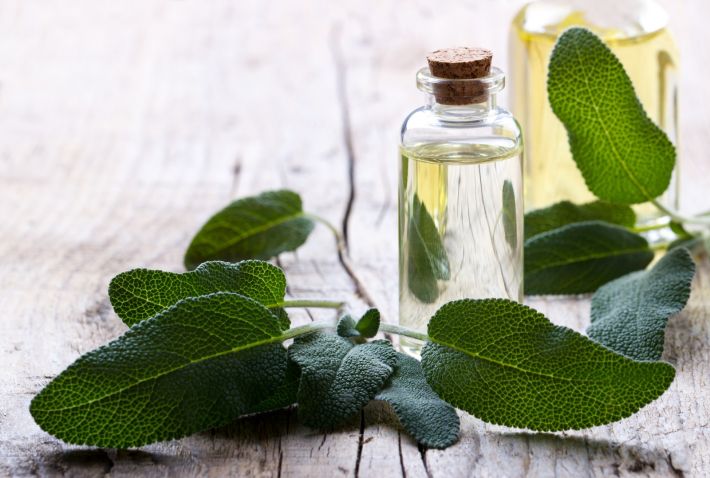
Sage is a strongly-scented herb that can be used to flavour many vegetable or meat dishes. Fresh or dried leaves are used to make teas.
Sage: Strong antiseptic properties. Wounds heal quickly when washed with sage tea, and an infusion can be used as a gargle or a vaginal douche. Effective for fevers as it reduces night sweating and will help prevent flu from developing.
It has a regulating effect on hormones, so it is considered essential for pregnant women during menopause. A mild tea is beneficial for girls during puberty. Above all, sage will enrich the blood and tone up the system.
Sage is known for its ability to soothe a sore throat and restore one’s voice, but this herb also has elements that combat bacteria, viruses, and fungi. For a sore throat or laryngitis, gargle with sage tea or sip a cup that’s been heavily sweetened with honey, which has mild antiseptic properties and will also help soothe inflamed, irritated throats.
• Sage is also known to help ease night sweats that are associated with menopause.
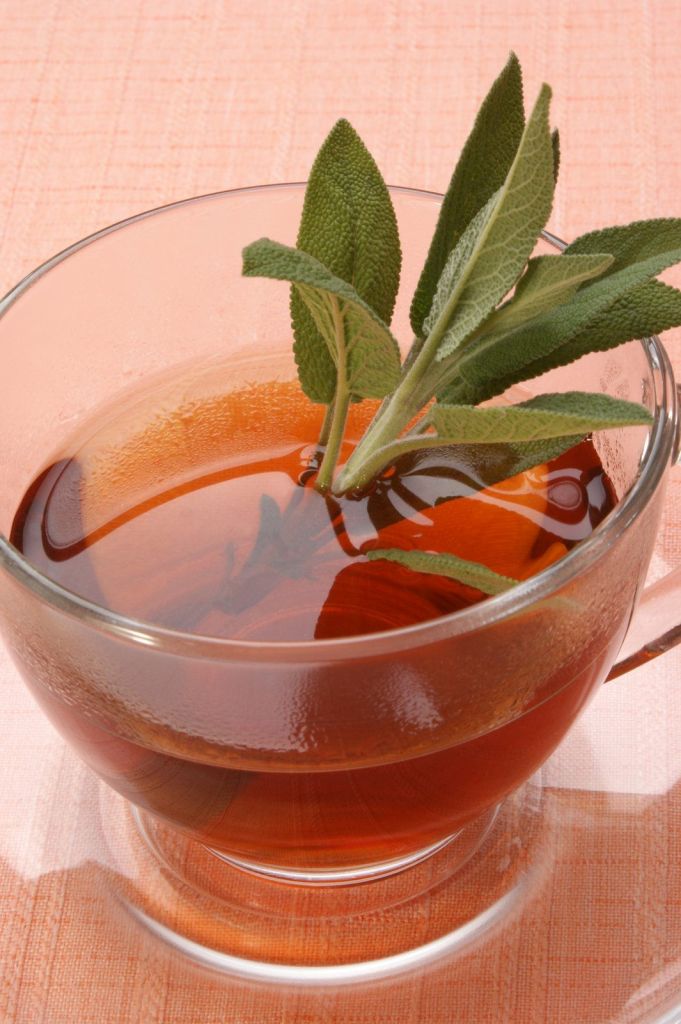
Sage is well known for its anti-flatulent properties and can counteract any ill effects in foods, that might have vibrant and fatty ones. A cup of sage tea is as effective as any pill, and if you are inclined to feel a little sick, add a quarter of a teaspoon of ground ginger; drink hot.
Thyme (Thymus vulgaris)
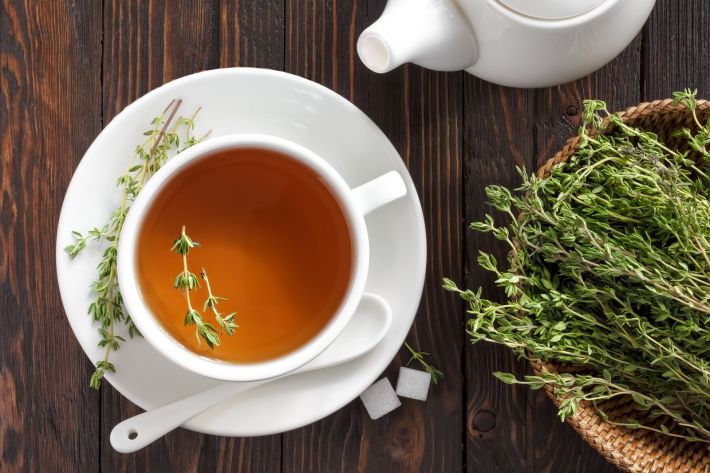
Wild thyme grows in the Levant, where it might have been first cultivated. Ancient Egyptians used thyme for embalming.
Thyme is a lovely aromatic herb in the mint family that’s easily cultivated, and it is probably in your kitchen cabinet right now.
It is a powerful antibacterial quality and gives protection against catching colds and flu. Its tonic properties are considerable, and it is suggested to sufferers from catarrh or a sore throat.
Before the advent of modern antibiotics, oil of thyme was used to medicate bandages.
Here's a recipe for cough medicine: boil one tablespoon of the whole linseed in a quart of water. At the same time, boiling pour this over 1 oz (37.8 g) of thyme and a finely sliced lemon; sweeten with honey; stir well and strain when cold. The dose is a tablespoonful five or six times a day.
Externally it is a dependable disinfectant; cuts and gashes don't rot if washed with an infusion of thyme. It helps rheumatism and arthritis, particularly as an oil essence in a warm bath. Chopped thyme makes a good poultice for rheumatism; warm a mash of it and then apply to the area.

Wild herbs
At first, it is not easy to recognise field herbs. The most common for medicinal purposes are:
Borage: Star Flower or Bee Plant
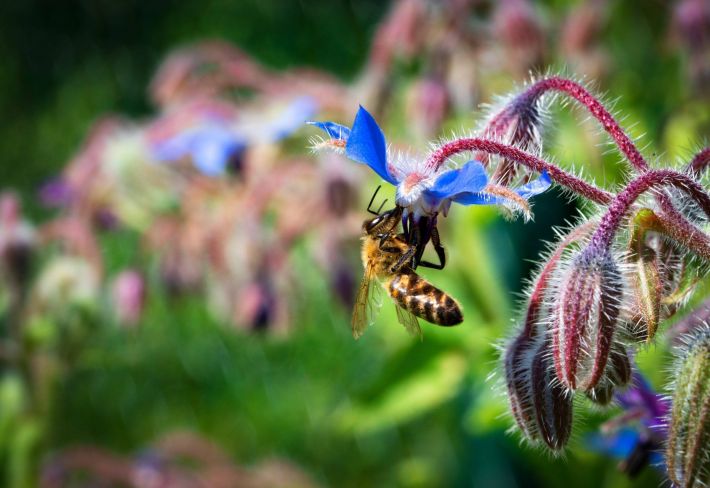
Borage: One of its more peculiar properties is that it banishes melancholy and comforts a heart saddened with grief; in today's terms, this means depression.
Make a borage tea from both flowers and leaves and use it for sudden fevers due to measles, scarlet fever, bronchitis, or flu. It is rich in calcium and potassium and influences the entire glandular system.
The juice of fresh borage is a good purifier and is said to revive the kidneys thoroughly. Seeds and leaves are said to increase mother's milk.
Rheumatoid arthritis (RA). There is some evidence that taking borage seed oil in combination with conventional painkilling or anti-inflammatory medications might help decrease symptoms of Rheumatoid arthritis after a six-week period of treatment.
Surgery: Borage might increase the risk of bleeding during and after surgery. Stop taking borage at least 2 weeks before a scheduled surgery.
Pregnancy and breast-feeding: Borage seed oil is probable unsafe during pregnancy and while breast-feeding. It is important to avoid borage products that might contain pyrrolizidine alkaloids (PAs). Pyrrolizidine alkaloids are a risk to the mother because they can cause serious liver disease and might cause cancer.
Greater celandine (Chelidonium majus)
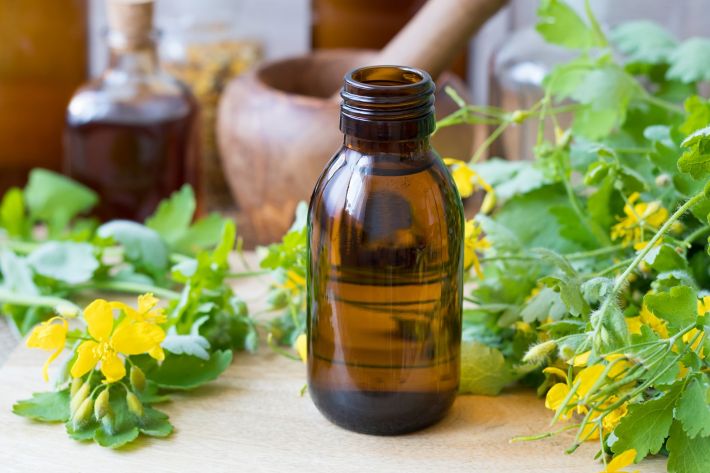
Celandine: Limit this to external use because it can be poisonous. If you break the stem, an orange juice trickles out, and if you put this on a wart — three or four applications — it will dry out, discolour and finally drop off.
Don't confuse greater celandine with lesser celandine (Family: Ranunculus ficaria).
It is equally effective against corns and callouses. The sap, diluted with water, can be used as an eyewash against conjunctivitis.
Due to a lack of high-quality clinical trials and serious safety concerns, greater celandine cannot currently be recommended for treatment or prevention of any health problem, including cancer.
Chamomile (American English) or camomile (British English)
Matricaria chamomilla L
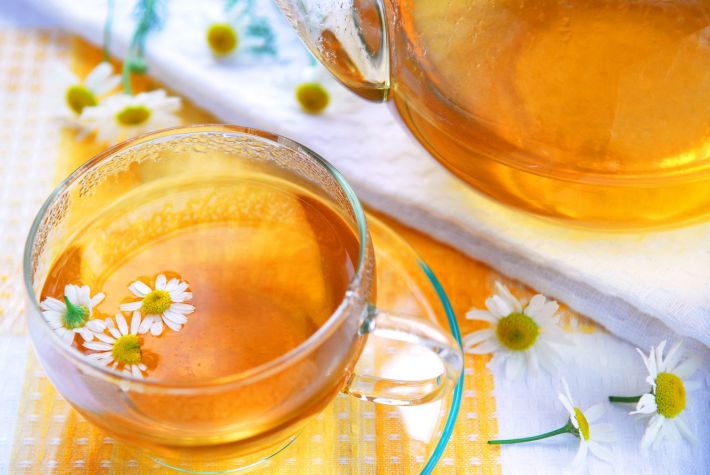
Camomile tea has long been used, as a traditional folk remedy, for a wide range of health issues. Nowadays, researchers are increasingly exploring its effectiveness in managing illnesses, including cancer and diabetes.
Camomile: An infusion taken in doses of one or two tablespoons three times a day is excellent for most nervous conditions and, if added to hot water and drunk before retiring, will induce sleep.
Camomile tea has long been used, as a traditional folk remedy, for a wide range of health issues. Nowadays, researchers are increasingly exploring its effectiveness in managing illnesses, including cancer and diabetes.
It strengthens digestion and is advised to sufferers of spasmodic coughs due to indigestion. As a lotion, it can soothe toothache or neuralgia — make an infusion of equal parts of camomile flowers and poppy heads (altogether about 1 oz [30 g]. With a pint (6 dl) of boiling water.
Menstrual pain
Several studies have linked camomile tea to reduce the severity of menstrual cramps. A 2010 study, for example, found that consuming camomile tea for a month could reduce the pain of menstrual cramps. Women in the study also reported less anxiety and distress associated with period pain.
Skin conditions
A small 1987 study found that applying chamomile extract directly to a wound assisted healing. Likewise, a few studies have found that chamomile ointments may help with eczema and mild inflammatory skin conditions, although they are not as effective as hydrocortisone cream.
A poultice of camomile is said to prevent gangrene and then remove it when present. If you sponge a weak infusion all over the body, it prevents any type of insect from biting you.
Many doctors recommend infants and young children avoid honey, and they should also avoid chamomile products, because of possible contamination.
Comfrey (S. Asperimum), Prickly Comfrey
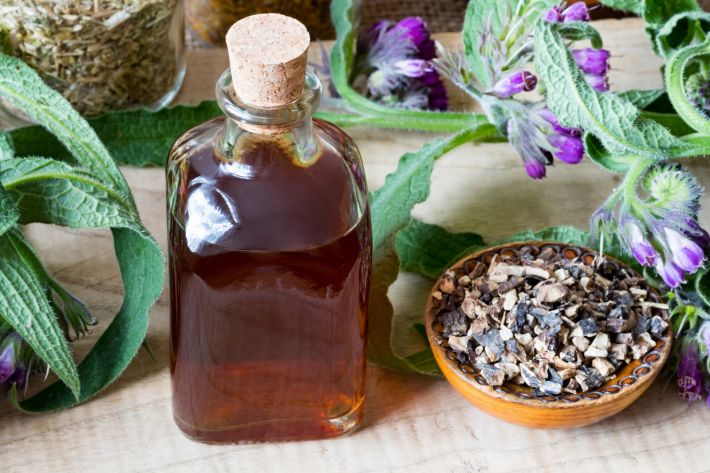
This well-known showy plant is a member of the Borage and Forget-me-not tribe, Boraginaceae. |
Comfrey: A powerful remedy for coughs, sinusitis, lung trouble, asthma, ulceration of the kidneys, stomach, or bowels. Boil 1 oz (37.8 g) of crushed root in a pint (6 dl) of water for 10 minutes, add an equal quantity of milk, simmer for a quarter of an hour. A wine glassful should be taken every 3 hours.
Warning: Even though comfrey is a useful herb, it contains poisonous compounds called pyrrolizidine alkaloids that can harm the liver if ingested or even absorbed through the skin in unsafe quantities. Some species of comfrey have more pyrrolizidine alkaloids than others, and even if the label states the product is pure common comfrey, it may be made with other, more poisonous varieties.
An infusion of the leaves is also good, sometimes flavoured with lemon juice to improve the taste.
Wound healing
Poultices of muslin or cloth wrung out in a strong infusion of comfrey to relieve the pain of bruises, sprains, and fractures. It has analgesic properties, reducing inflammation, and allowing your body to heal the area faster.
Poultices of fresh leaves are excellent for ruptures, flesh wounds, burns, and moist ulcers. A poultice can relieve pain in the joints.
When absorbed through the skin, especially broken skin, the vitamin C and other antioxidants it contains can speed healing. Do not use comfrey on deep wounds, however, as it can cause the skin to heal before the tissue underneath, resulting in abscesses and infections.
Back Pain
Back pain can be debilitating and interrupt daily life, even with medication. Comfrey works as an anti-inflammatory and analgesic when it comes to back pain. Applying comfrey for five days has been shown to improve lower and upper back pain. Since it is powerful, you don't have to use much to experience relief.
Arthritis Pain
If you have osteoarthritis due to ageing or injuries, you might want to keep a tube of comfrey cream or oil nearby. The herb's topical pain relief and anti-inflammatory properties improve the feel and function of afflicted joints.
Nettle (Urtica dioica) Often known as common nettle, stinging nettle or nettle leaf, or just a nettle. You may also hear it called, burn weed or burn hazel.
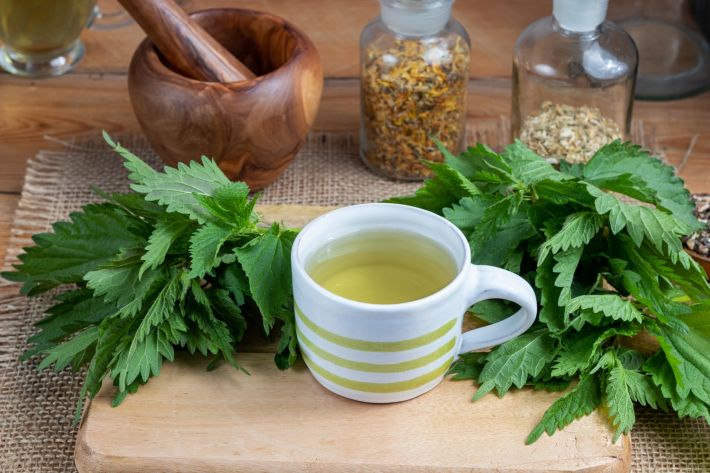
Nettle: Ancient Egyptians used stinging nettle to treat arthritis and lower back pain, while Roman troops rubbed it on themselves to help stay warm.
Its scientific name, Urtica dioica, comes from the Latin word uro, which means “to burn,” because its leaves can cause a temporary burning sensation upon contact.
The leaves have hair-like structures that sting and also produce itching, redness, and swelling.
The nettle is viewed as a promising natural treatment for hay fever. Research shows that stinging nettle extracts can inhibit inflammation that can trigger seasonal allergies.
It also contains iron, sulphur, potassium, and sodium and is helpful for kidney trouble. The green leaves' poultice can relieve pain; the boiled leaves applied externally will stop bleeding almost at once.
Nettle tea is good for rheumatism and directly affects the circulatory system, helping to arrest haemorrhages, nosebleed and reducing heavy menstruation.
An infusion of the leaves can be used as a gargle for a sore throat and washed for such skin conditions as eczema, acne, and herpes.
Nettle contains a number of useful ingredients such as fatty acids, lignans, vitamin C, beta-sitosterol, all of which have proven positive effects on prostate, potency, and libido.
Potential Side Effects
Consuming dried or cooked stinging nettle is generally safe. There are few, if any, side effects.
However, be careful when handling fresh stinging nettle leaves, as their hair-like barbs can harm your skin.
These barbs can inject an array of chemicals, such as :
- Acetylcholine
- Histamine
- Serotonin
- Leukotrienes
- Formic acid
These compounds can cause rashes, bumps, hives, and itchiness.
In rare cases, people may have a severe allergic reaction, which can be life-threatening.
However, these chemicals diminish as the leaves are processed, meaning that you shouldn’t experience mouth or stomach irritation when eating dried or cooked stinging nettle.
Pregnant women Should avoid consuming stinging nettle because it may trigger uterine contractions, which can raise the risk of a miscarriage.
Speak to your doctor before consuming stinging nettle if you’re taking one of the following:
- Blood thinners
- Blood pressure medication
- Diuretics (water pills)
- Diabetes medication
- Lithium
Stinging nettle could interact with these medications. For instance, the plant’s potential diuretic effect may strengthen the impact of diuretics, which can raise your risk of dehydration.
Shepherd's Purse (Capsella bursa-pastoris)
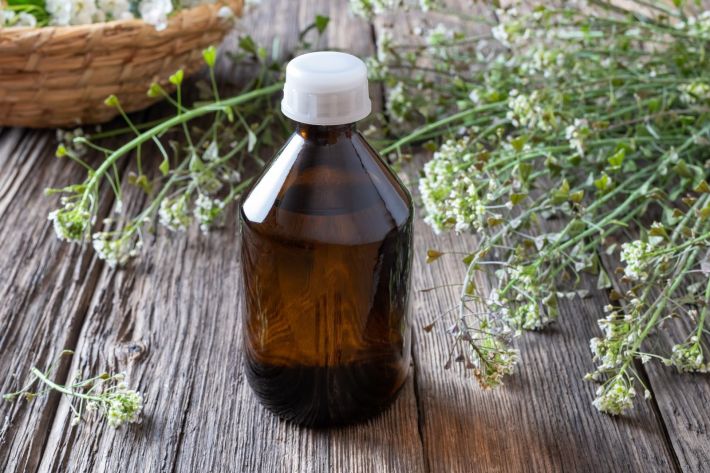
Common Names: Shepherd’s Purse, Sanguinary, Pick Purse, Witches’ Pouches, Mother’s Heart (Scots), lus na fola – The Blood Herb (Gaelic). The whole of Shepherd’s Purse is edible, and is rich in vitamins A, B, C and K and the minerals. In Japan, it is widely cultivated as a vegetable.
Shepherd's Purse: Rather like cress. The whole plant can be picked and dried, though it can also be put directly through a juicer — in this form, it is most beneficial for all disorders of the blood.
It can help check haemorrhages, spitting of blood and nosebleed; it eases excessive menstrual flow of girls during puberty or women at menopause. Poultices of Shepherd's Purse affects both varicose veins and haemorrhoids.
Shepherd’s Purse can stimulate uterine contractions, so it should be avoided during pregnancy. If taken in therapeutic doses over longer periods it can depress thyroid function.
This is because the break-down products of glucosinolates in the Brassica family can inhibit the uptake of iodine by the thyroid.
Large and persistent doses can cause heart palpitations.
Yarrow (Achillea millefolium)
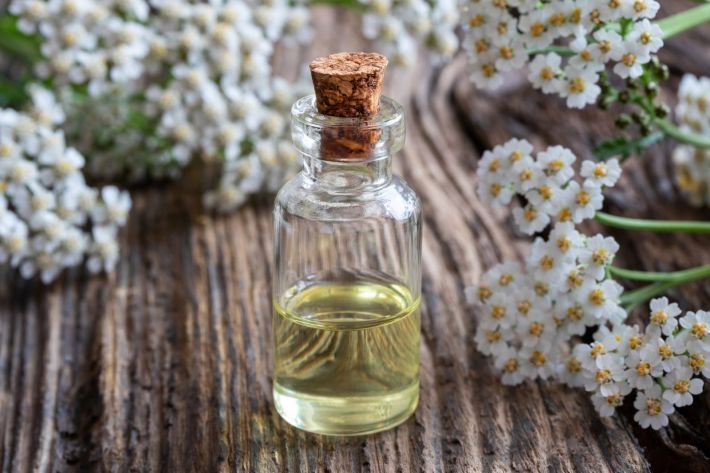
Yarrow has been used for thousands of years for its potential health benefits. In fact, its genus name, Achillea, refers to the warrior Achilles in Greek mythology, as he used yarrow to treat his soldiers’ wounds. If applied to a cut, the juice of the yarrow will stop bleeding and aid in healing.
If the tea is taken freely at the beginning of a cold — preferably mixed with elderberry blossoms and peppermint — it will clear it very quickly.
The flavonoids and alkaloids in yarrow tea may alleviate symptoms of depression and anxiety.
Studies demonstrate that plant-based alkaloids like those in yarrow tea reduce the secretion of corticosterone, a hormone that’s high during chronic stress.
Yarrow comes in several forms, including powders, ointments, tinctures, extracts, and dried leaves and flowers.
The leaves and flowers can be made into a tea by steeping 1–2 teaspoons (5–10 grams) in boiling water for 5–10 minutes. You can purchase the dried herb, as well as premade tea bags, from various health stores.
You can also add yarrow powder to smoothies, water, and juice — and use its essential oils in baths, lotions, or diffusers. An infusion is a perfect douche for leucorrhoea.
Keep in mind that insufficient evidence exists to establish dosage guidelines for yarrow tea or other products. As such, you should always refer to product labels and consult a healthcare practitioner before using this herb.
Kava (Piper methysticum)
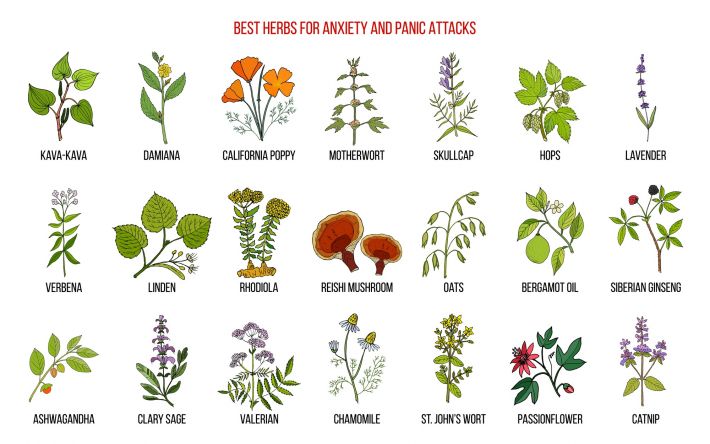

Kava root drying in Navala village, Viti Levu island, Fiji
It is a plant that grows in tropical climates, particularly on the islands of the Pacific Ocean.
It takes the shape of a shrub. Not only that, but it grows low to the ground, with light green, heart-shaped leaves.
Kava has been used as an unregulated herbal treatment for generations. But it was only recently that researchers isolated an active ingredient, called “kavain,” that affects mood receptors and helps people with anxiety. Kava is known to produce pleasant sensations and have a calming, relaxing effect on people that use it.
Because of its calming qualities, kava has come to the attention of the medical community as a possible treatment for generalized anxiety disorder (GAD). But kava’s history as a largely unregulated substance has made its use somewhat controversial. Research into the medicinal use of kava is ongoing.
Hibiscus is a flowering plant that you see growing in tropical, warm climates for the most part.
There are a few rare kinds of hibiscus, The seeds get added to coffee and the shoots and leaves get eaten as vegetables. The flower is also very popular in Homeopathy to treat urethritis and gonorrhoeal cystitis.
Disclaimer
Our website services, content, and products are for informational purposes only. We do not provide medical advice, diagnosis, or treatment.
Please consult a healthcare practitioner before using any of the recommended herbs within this report.
Further reading

Plant Alkaloids as an Emerging Therapeutic Alternative for the Treatment of Depression
https://www.ncbi.nlm.nih.gov/pmc/articles/PMC4753303/
A Systematic Review of the Anxiolytic-Like Effects of Essential Oils in Animal Models
https://www.ncbi.nlm.nih.gov/pmc/articles/PMC6332383/
Role of corticosterone in anxiety- and depressive-like behaviour and HPA regulation following prenatal alcohol exposure
https://pubmed.ncbi.nlm.nih.gov/30367959/
Traditional herbal medicines to overcome stress, anxiety and improve mental health in outbreaks of human coronaviruses
https://pubmed.ncbi.nlm.nih.gov/33350538/
http://botanical.com/site/column_susun/susun_herbalexp_2.html |
